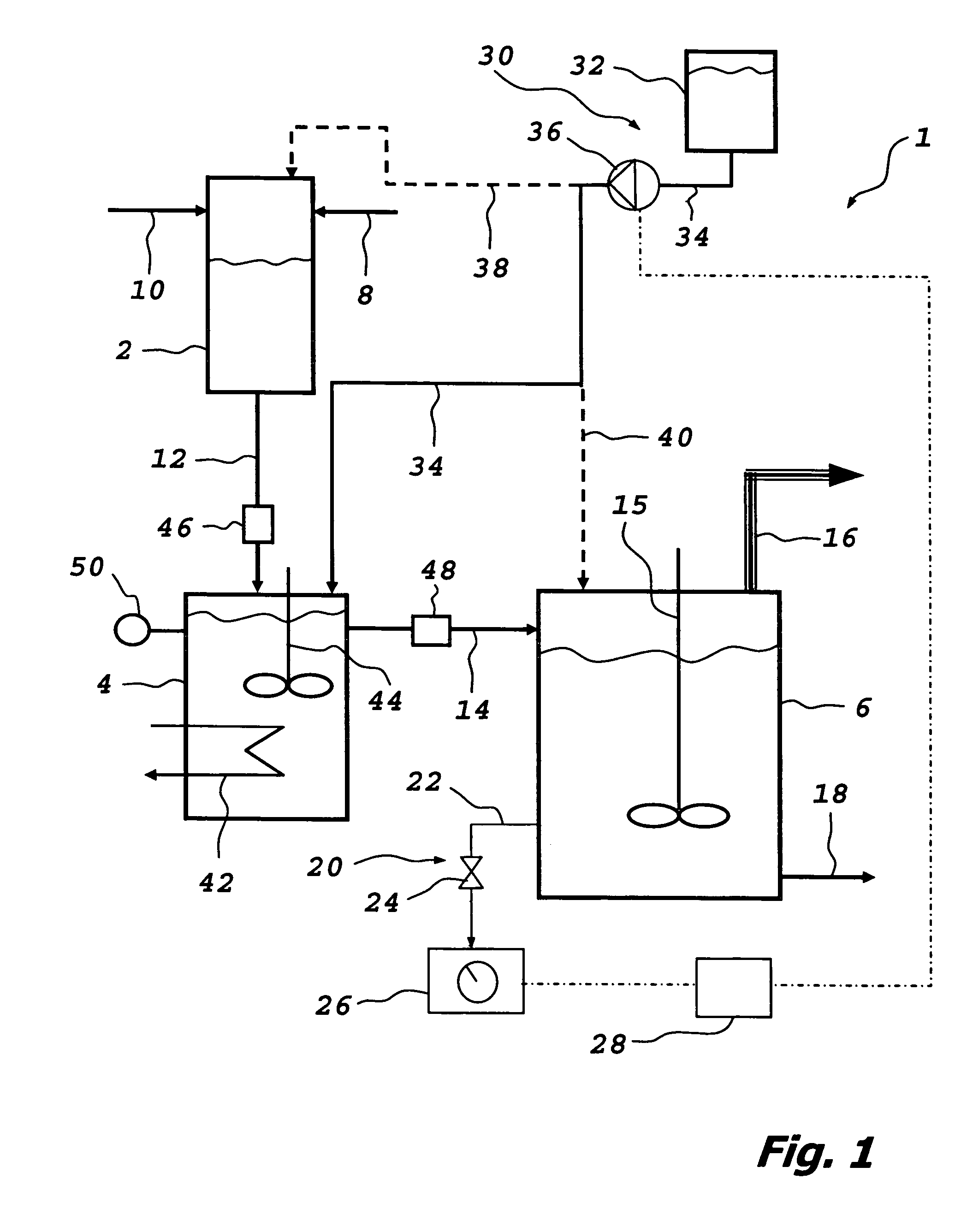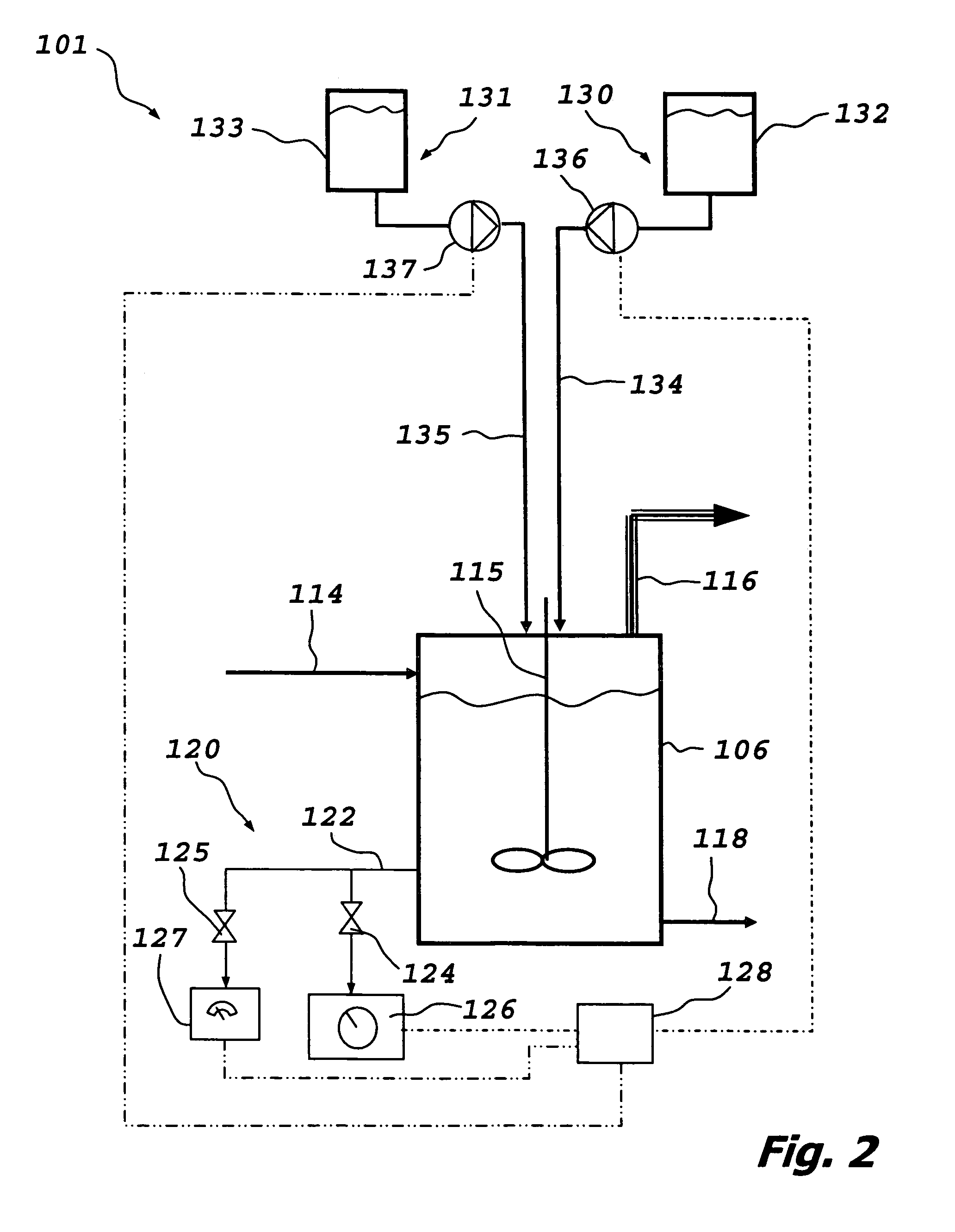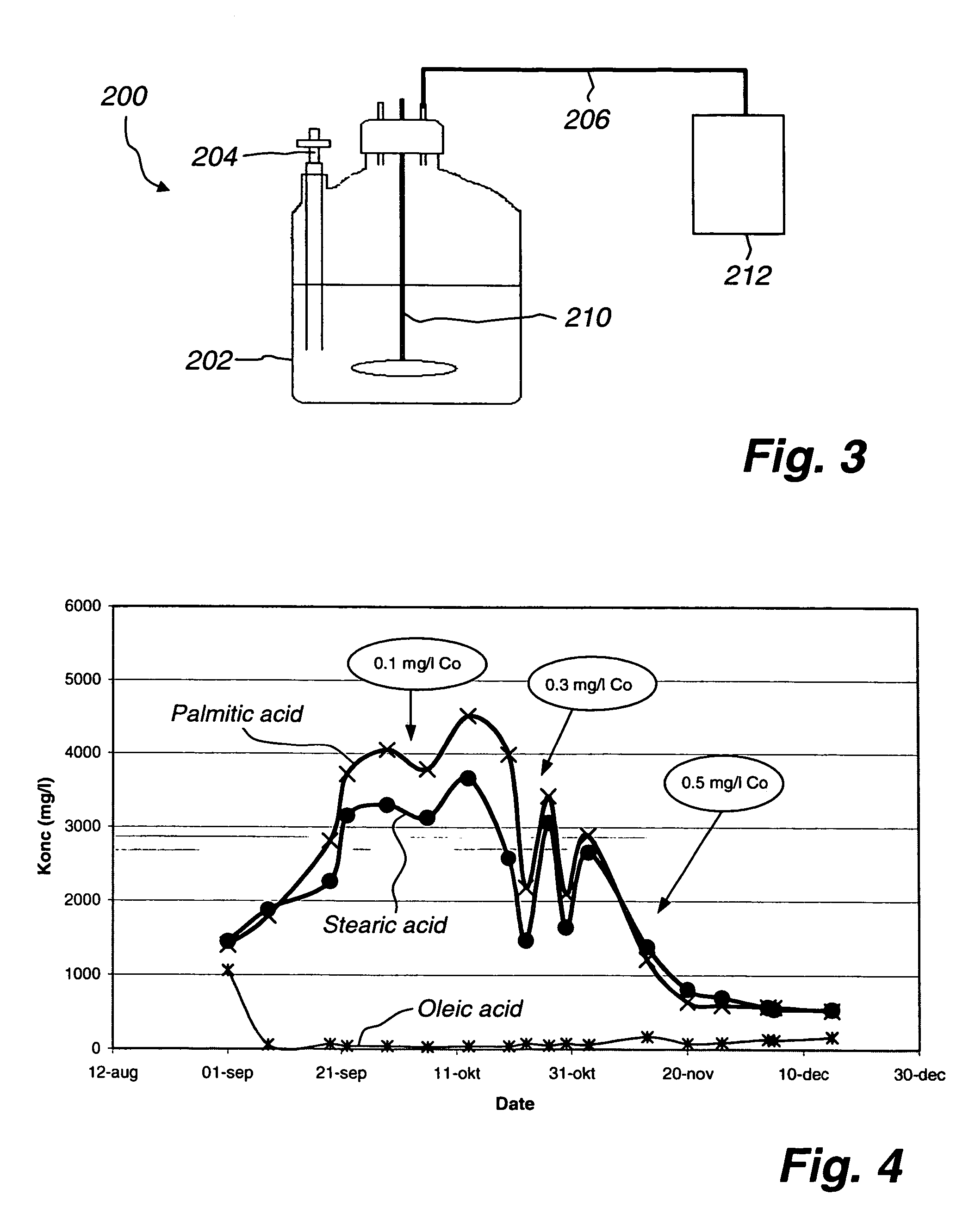Method, a device and an additive for digesting organic matter
a technology of organic matter and additive, which is applied in the direction of waste based fuel, biochemistry apparatus, biochemistry apparatus and processes, etc., can solve the problems of insufficient amount of trace metals available for microorganisms, insufficient optimum conditions for anaerobic digestion with different materials and operating conditions, and insufficient consumption of trace metals, so as to reduce the amount of undigested organic matter, increase the amount of biogas produced per ton of organic matter, and simple
- Summary
- Abstract
- Description
- Claims
- Application Information
AI Technical Summary
Benefits of technology
Problems solved by technology
Method used
Image
Examples
example 1
[0070]In a digestion experiment involving organic matter of animal origin an experimental device 200, which is shown in FIG. 3, was used. The device 200 has a gas-tight glass reactor 202 with a volume of 5 l. The liquid volume in the reactor 202 was kept constant at 3 l, thus the effective reactor volume was 3 l. A propeller agitator 210 (with a speed of 300 rpm) was used to achieve complete agitation in the reactor 202. A pipe 206 passed generated gas from the reactor 202 to a gas meter 212 measuring the volume of generated gas. A tight glass feed-through 204 was used for batch supply of sanitised ground organic matter and intermittent removal of formed digested sludge. A tempered space (not shown) was used to keep the temperature in the glass reactor 202 at 37° C.
[0071]The organic matter contained about 60% by volume of slaughterhouse waste (mainly blood, muscles, bowels and fat), cow dung (about 5% by volume) and waste from food processing industry (totally about 35% by volume). ...
example 2
[0077]In a full-scale plant tests were conducted to evaluate the efficiency of the additive according to the invention. The full scale plant had two reactors with volume of about 3600 m3 each. The residence time was about 45 days. The general-set-up of the plant was similar to that described with reference to FIG. 1, with the exception that the sampling and analysis of the sludge was made manually and that the feeding system for feeding the additive was controlled manually based on analysis results.
[0078]Three different solutions were used during the tests: Solution A was a commercially available iron chloride solution containing FeCl2 in water. The content of iron, Fe, was about 14% by weight. Solution B was a mixture of FeCl2, hydrochloric acid (HCl) and water. The content of iron, Fe, corresponded to about 9% by weight and the content of hydrochloric acid, HCl, corresponded to about 6% by weight. Solution C was formed as an additive according to the invention and contained: cobal...
PUM
| Property | Measurement | Unit |
|---|---|---|
| concentration | aaaaa | aaaaa |
| pH | aaaaa | aaaaa |
| residence times | aaaaa | aaaaa |
Abstract
Description
Claims
Application Information
 Login to View More
Login to View More - R&D
- Intellectual Property
- Life Sciences
- Materials
- Tech Scout
- Unparalleled Data Quality
- Higher Quality Content
- 60% Fewer Hallucinations
Browse by: Latest US Patents, China's latest patents, Technical Efficacy Thesaurus, Application Domain, Technology Topic, Popular Technical Reports.
© 2025 PatSnap. All rights reserved.Legal|Privacy policy|Modern Slavery Act Transparency Statement|Sitemap|About US| Contact US: help@patsnap.com



